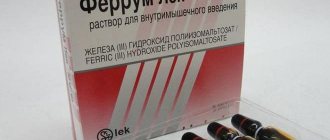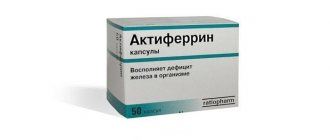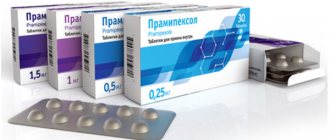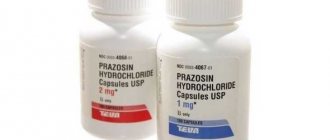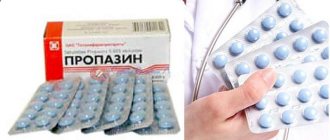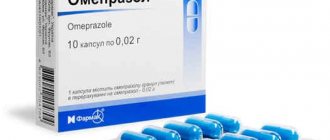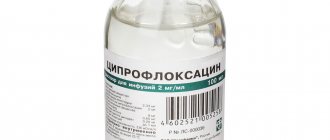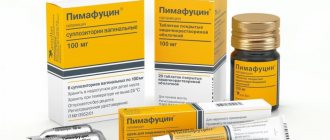Ferrum Lek, 100 mg, chewable tablets, 50 pcs.
Inside,
during or immediately after meals.
Ferrum Lek® chewable tablets can be chewed or swallowed whole.
The daily dose can be divided into several doses or taken at one time.
Ferrum Lek® syrup can be mixed with fruit or vegetable juices or added to baby food.
Doses and duration of treatment depend on the degree of iron deficiency.
The measuring spoon included in the package is used for precise dosing of Ferrum Lek® syrup.
Iron-deficiency anemia
Duration of treatment is about 3–5 months. After normalization of hemoglobin levels, you should continue taking the drug for several more weeks to replenish iron reserves in the body.
Children under one year of age
: 2.5 ml (½ measuring spoon) - 5 ml (1 measuring spoon) Ferrum Lek® syrup per day.
Children aged 1 to 12 years
: 5–10 ml (1–2 scoops) of Ferrum Lek® syrup per day.
Children over 12 years of age, adults and mothers breastfeeding
: 1–3 chewable tablets or 10–30 ml (2–6 scoops) Ferrum Lek® syrup.
Latent iron deficiency
The duration of treatment is about 1–2 months.
Children aged 1 to 12 years
: 2.5–5 ml (1/2–1 scoop) Ferrum Lek® syrup per day.
Children over 12 years of age, adults and mothers breastfeeding
: 1 table. or 5–10 ml (1–2 scoops) of Ferrum Lek® syrup per day.
Pregnant women
Iron-deficiency anemia
: 2–3 chewable tablets per day or 20–30 ml (4–6 scoops) of Ferrum Lek® syrup until hemoglobin levels normalize. After this, you should continue to take 1 chewable tablet or 10 ml (2 scoops) of syrup per day, at least until the end of pregnancy to replenish iron stores in the body.
Latent iron deficiency and prevention of iron deficiency
: one chewable tablet or 5–10 ml (1–2 scoops) of Ferrum Lek® syrup per day.
Daily doses of Ferrum Lek® for the prevention and treatment of iron deficiency in the body
| Patients | Form of the drug | Iron-deficiency anemia | Latent iron deficiency | Preventing iron deficiency |
| Children under 1 year | Syrup | 2.5–5 ml (25–50 mg iron) | — | — |
| Children 1–12 years old | Syrup | 5–10 ml (50–100 mg iron) | 2.5–5 ml (25–50 mg iron) | — |
| Children over 12 years old, adults, nursing mothers | Chewable tablets | 1–3 tables | 1 table | — |
| Syrup | 10–30 ml (100–300 mg iron) | 5–10 ml (50–100 mg iron) | — | |
| Pregnant women | Chewable tablets | 2–3 tables | 1 table | 1 table |
| Syrup | 20–30 ml (200–300 mg iron) | 10 ml (100 mg iron) | 5–10 ml (50–100 mg iron) |
(-) Due to the fact that this group of patients requires low doses of iron, it is not recommended to use tablets or syrup in these cases.
V/m
(only).
Before administering the first therapeutic dose of the drug, each patient should be given a test dose of 1/4–1/2 amp. Ferrum Lek® (25–50 mg iron) for an adult and half the daily dose for a child. If there are no adverse reactions, the remainder of the daily dose can be administered within 15 minutes.
Doses of Ferrum Lek® must be selected individually, in accordance with the general iron deficiency, which is calculated using the following formula:
Total iron deficiency = body weight (kg) × (calculated hemoglobin level (g/l) − actual hemoglobin level (g/l) × 0.24) + deposited iron (mg)
Body weight up to 35 kg: estimated hemoglobin level = 130 g/l and deposited iron = 15 mg/kg
Body weight over 35 kg: estimated hemoglobin level = 150 g/l and deposited iron = 500 mg
Factor 0.24 = 0.0034 × 0.07 × 1000
(Iron content = 0.34%; total blood volume = 7% body weight; factor 1000 = conversion from g to mg).
Example
Patient body weight: 70 kg
Real hemoglobin concentration: 80 g/l
Total iron deficiency = (150 − 80) × 0.24 + 500 = 1700 mg iron
Total number of Ferrum Lek® ampoules to be administered = Total iron deficiency (mg) / 100 mg
Calculation of the total number of Ferrum Lek® ampoules that must be administered, based on the actual hemoglobin concentration and body weight
| Body weight, kg | Total number of Ferrum Lek® ampoules for administration | |||
| Hb 60 g/l | Hb 75 g/l | Hb 90 g/l | Hb 105 g/l | |
| 5 | 1,5 | 1,5 | 1,5 | 1 |
| 10 | 3 | 3 | 2,5 | 2 |
| 15 | 5 | 4,5 | 3,5 | 3 |
| 20 | 6,5 | 5,5 | 5 | 4 |
| 25 | 8 | 7 | 6 | 5,5 |
| 30 | 9,5 | 8,5 | 7,5 | 6,5 |
| 35 | 12,5 | 11,5 | 10 | 9 |
| 40 | 13,5 | 12 | 11 | 9,5 |
| 45 | 15 | 13 | 11,5 | 10 |
| 50 | 16 | 14 | 12 | 10,5 |
| 55 | 17 | 15 | 13 | 11 |
| 60 | 18 | 16 | 13,5 | 11,5 |
| 65 | 19 | 16,5 | 14,5 | 12 |
| 70 | 20 | 17,5 | 15 | 12,5 |
| 75 | 21 | 18,5 | 16 | 13 |
| 80 | 22,5 | 19,5 | 16,5 | 13,5 |
| 85 | 23,5 | 20,5 | 17 | 14 |
| 90 | 24,5 | 21,5 | 18 | 14,5 |
If the required dose of Ferrum Lek® exceeds the maximum daily dose, the drug should be administered in fractional doses (over several days).
If hematological parameters do not change 1–2 weeks after the start of treatment, the diagnosis should be clarified.
Calculation of the total dose for iron replacement due to blood loss
The required amount of the drug to compensate for post-hemorrhagic iron deficiency is calculated using the following formula.
If the amount of blood lost is known: administration of 200 mg IM (2 amps of Ferrum Lek®) leads to an increase in hemoglobin levels, which is equivalent to 1 unit of blood (400 ml of blood with a hemoglobin content of 150 g/l).
Iron to be replaced (mg) = number of blood units lost × 200 or required number of Ferrum Lek® ampoules = number of blood units lost × 2.
If the final hemoglobin level is known, the following formula must be used, taking into account that deposited iron does not need to be replaced.
Iron to be replaced (mg) = body weight (kg) × (estimated hemoglobin level (g/L) − actual hemoglobin level (g/L) × 0.24.
A patient with a body weight of 60 kg and a hemoglobin deficiency of 10 g/l should be replaced with 150 mg of iron, which is 1.5 ampoules of Ferrum Lek®.
Standard doses
Children: 0.06 ml/kg/day (3 mg iron/kg/day).
Adults: 1–2 amp. Ferrum Lek® (100–200 mg iron), depending on the hemoglobin level.
Maximum daily doses
Children: 0.14 ml/kg/day (7 mg iron/kg/day).
Adults: 4 ml (2 amps) per day.
Pharmacological properties
According to the instructions, Ferrum Lek is based on the hydroxide-polymaltose complex of ferric iron. This active substance has a large molecular weight and cannot be absorbed by diffusion or along a concentration gradient. The structure of the hydroxide-polymaltose iron complex is similar to ferritin, a natural complex for the body consisting of iron and a protein part.
These differences from the divalent analogues of Ferrum Leka are its advantages - the drug is actively transported through the mucous membranes, and absorption of excess is impossible - only the amount of iron that is needed will enter the body. The drug does not have a damaging effect on membranes and mucous membranes, since it is devoid of the oxidizing properties of divalent iron.
In the body, iron is used to build hemoglobin in the bone marrow, muscle protein and tissue enzymes. Hemoglobin carries oxygen to tissues and carbon dioxide from them.
The drug Ferrum Lek quickly enters the bloodstream when taken orally, being absorbed mainly in the duodenum. In the blood, it binds to the transport protein transferrin and is carried to the tissues. Under body conditions, Ferrum Lek is stable and does not release iron ions. It is eliminated through the intestines.
special instructions
Syrup, tablets
For children under 12 years of age, it is preferable to administer Ferrum Lek in the form of syrup (due to the need for precise dosage when prescribing low doses).
The drug does not stain teeth enamel.
In cases of treatment of anemia, which is caused by malignant/infectious diseases, iron accumulates in the reticuloendothelial system, from which it is mobilized and utilized only after the underlying disease has been cured.
When using Ferrum Lek, the stool may turn dark (it does not have any clinical significance). Taking iron supplements does not affect the results of the hidden bleeding test.
1 ml of syrup/1 chewable tablet contains 0.04 XE (bread units).
The drug contains phenylalanine, in an amount equivalent to 1.5 mg per 1 tablet (this should be taken into account in patients with phenylketonuria).
Injection solution
Ferrum Lek should be used only in stationary conditions.
When using the drug, laboratory tests should be carried out: determination of serum ferritin and a general clinical blood test. Impaired iron absorption must be excluded.
Ferrum Lek solution should be injected intramuscularly deep into the gluteal muscle (in turn into the left/right) with a 5-6 cm long needle; when inserting the needle, tissue shifting is indicated, after its removal - squeezing.
The opened ampoule should be used immediately.
Ferrum Lek should not be mixed with other medications.
You can start taking oral forms of iron-containing medications no earlier than 5 days after the last injection.
If the drug is stored incorrectly, sedimentation may occur; in such cases, it should not be used.
Similar drugs:
- Feroplectum Oral tablets
- Ferrum Lek Solution for intramuscular administration
- Sorbifer Durules Tablets
- Ferrous gluconate 300 Oral tablets
- Tot'héma Oral solution
- Likferr 100 (LIKFERR 100) Solution for injection
- Venofer Solution for infusion
- Hemofer Oral drops
- Maltofer Fol Chewable tablets
- Hemofer (Hemofer) Dragee
** The Drug Directory is intended for informational purposes only. For more complete information, please refer to the manufacturer's instructions. Do not self-medicate; Before starting to use the drug Ferrum Lek, you should consult a doctor. EUROLAB is not responsible for the consequences caused by the use of information posted on the portal. Any information on the site does not replace medical advice and cannot serve as a guarantee of the positive effect of the drug.
Are you interested in the drug Ferrum Lek? Do you want to know more detailed information or do you need a doctor's examination? Or do you need an inspection? You can make an appointment with a doctor - the Euro lab is always at your service! The best doctors will examine you, advise you, provide the necessary assistance and make a diagnosis. You can also call a doctor at home . Euro lab clinic is open for you around the clock.
** Attention! The information presented in this medication guide is intended for medical professionals and should not be used as a basis for self-medication. The description of the drug Ferrum Lek is provided for informational purposes and is not intended for prescribing treatment without the participation of a doctor. Patients need to consult a specialist!
If you are interested in any other drugs and medications, their descriptions and instructions for use, information about the composition and form of release, indications for use and side effects, methods of use, prices and reviews of drugs, or you have any other questions and suggestions - write to us, we will definitely try to help you.
Drug interactions
The simultaneous use of Ferrum Lek in oral forms with parenteral iron preparations and other drugs of iron III hydroxide polymaltosate for oral administration is not recommended (associated with pronounced inhibition of the absorption of orally administered iron).
Ferrum Lek injection solution should not be used in combination with oral iron-containing medications.
Combined use with angiotensin-converting enzyme inhibitors may lead to increased systemic effects of parenteral iron preparations.
Indications for use
Syrup, tablets
- latent iron deficiency (treatment);
- iron deficiency anemia (treatment);
- Iron deficiency during pregnancy (prevention).
Injection solution
Ferrum Lek is prescribed for the treatment of iron deficiency conditions of all forms that require rapid replenishment of iron stores, including the following diseases/conditions:
- impaired absorption of iron in the intestines;
- severe iron deficiency associated with blood loss;
- conditions in which therapy with oral forms of iron supplements is not feasible/ineffective.
Contraindications
General absolute contraindications for Ferrum Lek in all dosage forms:
- excess iron in the body (hemosiderosis, hemochromatosis);
- anemia that is not associated with iron deficiency, including hemolytic, megaloblastic, associated with a lack of cyanocobalamin;
- violations of the iron utilization mechanism (thalassemia, sideroachrestic or lead anemia);
- individual intolerance to the components of the drug.
Additionally for chewable tablets: age up to 12 years.
Additionally for the syrup: the presence of rare hereditary forms of fructose intolerance, glucose-galactose malabsorption and sucrose-isomaltase deficiency (the syrup contains sorbitol and sucrose).
Additionally for injection solution:
- Randu–Osler–Weber syndrome;
- acute stage of infectious kidney diseases;
- infectious hepatitis;
- decompensated cirrhosis of the liver;
- uncontrolled hyperparathyroidism;
- I trimester of pregnancy.
Relative contraindications (diseases/conditions in which the use of Ferrum Lek requires caution):
- cardiovascular failure;
- bronchial asthma;
- chronic polyarthritis;
- folic acid deficiency or low ability to bind iron;
- diabetes mellitus (syrup);
- age up to 4 months (injection solution).
Classification
Anemia has three degrees of severity, which depend on the number of red blood cells and hemoglobin in the blood. This condition develops due to a lack of microelements or vitamins. Anemia can be of the following types:
- folate deficiency;
- iron deficiency;
- caused by vitamin B12 deficiency.
The most common anemia during pregnancy is iron deficiency. With this type, the amount of hemoglobin, which transports oxygen from the lungs to all cells of the body, is reduced.
